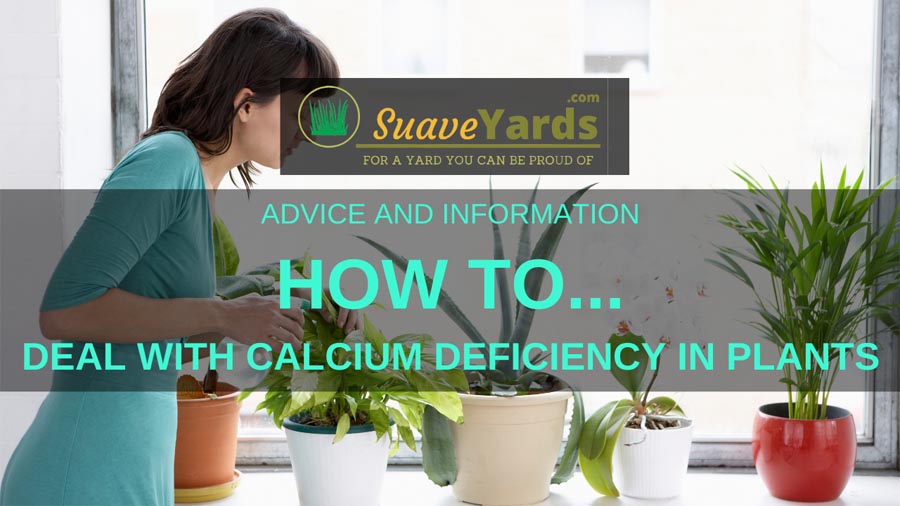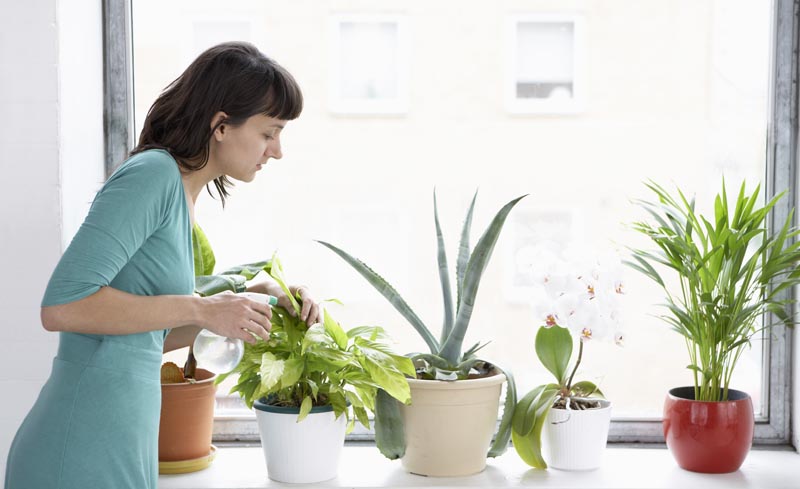
Calcium plays an important role in plants. It allows plants to grow better. So, what are the effects of calcium deficiency in plants?
Read on to find out what causes it and how to solve calcium deficiency.
Calcium in Plants
Calcium is important in life. We know that it is essential in people, but did you know that it is also important in plants?
That’s right! Calcium is necessary in the growth of plants.
Let’s be technical
Calcium is considered a secondary nutrient that is essential in the growth of plants. It has a huge role in the formation of cell walls and cell membranes.
Calcium also has a crucial role in terms of soil structure. This means that the soil itself should have calcium so that plants will have access to it all the time.
Take this into consideration
This mineral has low mobility. This means that once it has been used up, it doesn’t move up to be used up by new developing tissues.
This is why calcium deficiency is quite common in plants and soils.
Importance of calcium:
Calcium is important in both plants and soil. It’s important in plants because it keeps them healthy.
Healthy plants are more nutritious and more delicious.
When present in soil, calcium allows better water infiltration.
How does it work?
Calcium expels sodium in the soil, which could very well improve the overall quality of the soil. When soil is high in sodium and low in calcium, water penetration isn’t too good.
You know that water is one of the most important things that you should feed plants. To ensure that plants absorb adequate amounts of water, make sure the soil has enough calcium.
Moving on
How do you know if your plants don’t have enough calcium? Here are some indicators:
1. Damaged leaves
You know what the leaves of your plants will look like. So, when it’s growing up with a different shape, then it might be because it is deficient in calcium.
Some leaves have curled edges. Some have discoloration.

Other indicators:
When you see your leaves having brownish chlorotic spots, then you know that your plant is not healthy.
There are also cases when the tips of the leaves are burned.
And you know what?
There are cases when you see all these characteristics are present in leaves at the same time. While the plant is still alive, it will certainly look ugly.
2. Death of growing points
Growing points refer to the part where new cells are developed. Examples of growing points are the tips of the roots and the tips of the stems. Buds on branches can also be considered growing points.
This means that the plant is no longer developing. It could no longer grow new leaves, or worse, the plant would cease to bear fruits.
3. Premature shedding
In somes cases, the plants start shedding their flowers and buds even when they have not fully matured.
This is such a waste because you can’t maximize the opportunity to have full-grown flowers blooming in your garden.
Even if you are just talking about non-flowering plants, you still want to see the entire thing mature fully.
4. Bitter pit
This is a disorder when the fruit of the plant has dark spots on the skin. This entails that the cells on those parts are dead, causing it to turn dark.
5. Reduced shelf life
Granting you have fruits that don’t have visible physical manifestations of having calcium deficiency, the effect is on shelf life.
If you have fruits that usually have a shelf life of a week, when they lack calcium, they may start rotting in just a couple of days.

What Causes Calcium Deficiency in Plants
We now know that calcium is important in plants or they will not be healthy. But how does calcium deficiency happen?
When do plants become calcium deficient?
Type of soil
Sometimes, it’s just the type of soil that you have. Sandy or coarse soils are known to have less calcium.
Uneven soil moisture
The lack of calcium also happens because of the local climate. If your region is known for unpredictable weather, then chances are the soil moisture will be uneven.
The same goes for warm regions. With too much heat, the soil will lack moisture. If you don’t tend to it by providing adequate amounts of water, then it could lead to calcium deficiency.
Overuse of fertilizer
We know fertilizers are great for gardening. However, just like everything else in life, too much of a good thing can be bad.
That’s exactly the case with too much fertilizer.
Here’s the deal:
Chemical fertilizers contain nitrogen, phosphorus and potassium, which are collectively known as NPK based on their respective chemical symbols.
Too much fertilizer makes the soil acidic due to its nitrogen content. Remember that acidic soil could be bad for water penetration.
Meanwhile
Too much phosphorus could also lead to the creation of insoluble forms of calcium.

The good thing about this problem is that it can be solved. As soon as you see the earliest signs of calcium deficiency (the symptoms mentioned above), you have to immediately do something about it.
How to Fix Calcium Deficiency in Plants
If your plants lack calcium, then it’s just logical that to solve this, you have to put calcium in plants.
But how do you do that?
First, let’s talk about the products that contain calcium that you could use in your garden:
Lime
Have you heard of people putting lime on their lawn? That’s because lime can solve the calcium problem of your soil, which also extends to your plants.
There are two types of lime:
- Calcitic lime
- Dolomitic lime
Calcitic lime comprises limestone that is high in calcium carbonate. It’s a product that is often used to raise the pH level of the soil. It also adds calcium to the soil, but you only do that after checking the pH level of the soil.
You don’t want the pH level to become too high. So, don’t add calcitic lime when it’s not necessary to do so.
Dolomitic lime contains calcium carbonate. It also contains magnesium, which is an added bonus.
Gypsum
This is a mineral compound that contains sulfur and calcium.
Bone meal
This is a powder product made from crushed bones. It provides calcium and phosphorus in plants.
Crab meal
This is a product made from shells of crabs. It can also be made of shells from other crustaceans.
It provides calcium to plants as well as nitrogen and phosphorus. Usually, the product contains 10% to 20% calcium.
Calcium EDTA
This is a water soluble product that is responsible for holding onto calcium molecules so that the important mineral can be effectively distributed to plants.

Here’s an important reminder:
Before you start adding calcium to your soil for your plants, you have to make sure that you test the soil so you can effectively provide the best solution.
The thing is, it’s possible that the soil has enough calcium but it’s just not being distributed to the plants for various reasons.
In other words
When you test the soil and there is enough calcium there, you will realize that there might be other reasons why plants are not absorbing calcium.
Here are the other possibilities:
Irrigation issues
Maybe the plants are not getting access to water, which is why they are not getting enough calcium.
It could be that you have irrigation issues. It could also be that you are not providing plants with enough water. If you live in a tropical or hot region, then you have to make sure you keep the soil moist for your plants.
Low pH level
Again, when your soil is acidic, calcium won’t be able to penetrate the soil well and it won’t be able to reach the plants.
The appropriate pH level for plants is between 5.5 and 6. If it becomes lower than that, make sure you raise it appropriately.
Temperature
We mentioned that if it’s hot, then the soil would be too dry and would impede the plant’s absorption of calcium. Cold climate is also an impediment and transpiration rates will be low.
Adding calcium:
After testing the soil and figuring out what the problem is that caused calcium deficiency in plants, you can now choose the best way to add the mineral.
After making your choice, make sure you read the instructions on how to properly add the calcium to the soil.
And remember, you need to add just the right amount.

Summary
Are the leaves of your plants not looking healthy? They may look smaller than they should and have brown spots all over them. Or maybe the fruits of the plants have some bitter pits.
These are symptoms of calcium deficiency in plants. It’s best that you solve this problem as soon as you see it so you will have enough time to fix it. You don’t want to wait until the plants are bearing produce as they won’t taste good and they would have a short shelf life.
When you have plants that are lacking in calcium, the solution is simple: add more calcium to the plants. But you have to figure out if it’s the soil that lacks calcium or if the calcium is just not reaching the plants.
Useful Resources
- Calcium Deficiency – Department of Plant Science, PSU
- How to Add Calcium to Soil – The Spruce

